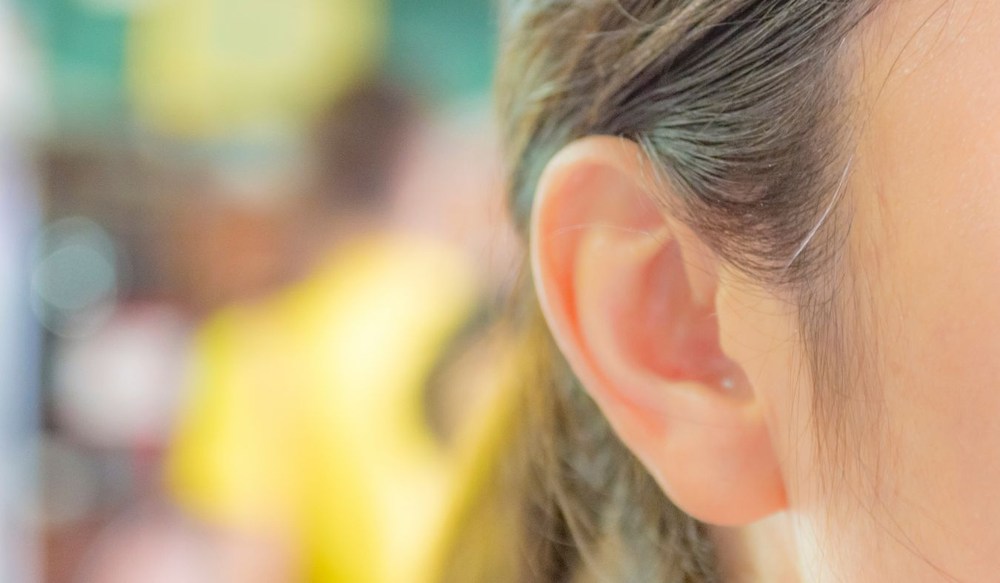The Role of Wearables in Monitoring Hearing Health
Keeping track of your hearing health is becoming easier and more effective
We Moved! Our new address is 12133 W Bell Rd, STE 201.

By: admin | October 20, 2025
Keeping track of your hearing health is becoming easier and more effective as technology advances. Many people already use devices like fitness trackers and smartwatches to monitor steps, heart rate and sleep. Now, similar technology is available to help you pay attention to your hearing. Wearable devices can collect information about the sounds in your environment and how often you are exposed to loud noise. This data helps you understand what might be affecting your hearing over time. If you have noticed changes in your hearing or want to prevent hearing loss, these tools can be very helpful. They allow you to spot patterns that could lead to problems if not addressed. With access to this information, you can make better choices about your daily habits and surroundings. As wearable technology becomes more common in health care, monitoring your hearing is more accessible than ever. Learning how these devices work can help you take control of your overall well-being.
The development of wearable technology for hearing health has shifted steadily from simple sound amplification to more advanced tools that track and protect hearing over time. Earlier hearing aids were designed mainly to make sounds louder, while newer devices now monitor how you interact with sound throughout the day. Many of today’s hearing aids and wearable devices can measure noise exposure, send alerts when the environment becomes too loud and record how often the devices are used. Some models connect with smartphone apps that log listening conditions and generate detailed reports for audiologists. This gradual shift was made possible by adding sensors, wireless connections and data-tracking technology to devices that once served a single purpose.
The expansion of hearing health features into common wearables has also made sound awareness more accessible. Smartwatches, earbuds and fitness trackers now include tools that measure sound levels and warn you when noise may become harmful. Some can even run simple hearing checks or track changes over time, helping users spot potential issues early. These advancements encourage people to think about hearing health as part of their overall wellness rather than something separate. Blending hearing monitoring into everyday devices, wearable technology has made it easier to protect hearing without changing daily routines or drawing extra attention.
Wearable technology is changing how people approach hearing health by making it easier to track and understand daily sound exposure. Devices like hearing aids, earbuds and smartwatches can now monitor the sounds around you and alert you when noise levels might be harmful. These tools collect information about your listening environments and provide useful feedback to help protect your hearing before problems develop. Because many wearables blend seamlessly into everyday life, they allow you to manage your hearing health naturally while going about your usual routines.
The connection between wearable devices and mobile apps has also created a new way to view and manage hearing information. With just a few taps, you can review how much noise you encounter, how often you use your hearing aids and even how your listening habits change over time. This kind of insight helps you and your audiologist make informed choices about your care. As technology continues to advance, wearables are becoming more reliable and versatile, offering a practical way to support long-term hearing wellness without adding extra effort to your day.
Wearable devices have changed the way you can keep track of your health each day. They collect information in real time, so you can see changes as they happen and make quick adjustments if needed. Many devices now send reminders or alerts to help you stay on top of your health goals. For hearing health, wearables can track how often you are in loud places and how long you stay there. This information helps you understand your habits and make choices that protect your hearing. With these tools, you have helpful information to support your health decisions.
There are many wearable devices designed specifically to help you monitor your hearing health. Popular options include smart hearing aids, personal sound amplification products (PSAPs) and smart earbuds that connect to apps on your phone.
These devices measure the noise levels in your environment and alert you if sounds are too loud for a safe amount of time. Some also track how often you are exposed to noisy places, helping you notice patterns that could affect your hearing. Using these features, you can make small changes in your daily routine, like moving away from loud areas or lowering the volume on headphones, to better protect your hearing.
Wearable devices use built-in microphones and sensors to measure the sounds around you and track how much noise you are exposed to throughout the day. These tools collect data on sound levels in real time, allowing the device to estimate how long your ears are being exposed to different intensities of noise. The information is then compared to safe listening limits, which are based on how long the human ear can tolerate certain volumes without damage. Some devices even track how much time you spend in quiet, moderate or loud environments, giving you a clear picture of your daily listening habits. This kind of ongoing monitoring helps you understand how your surroundings may affect your long-term hearing health.
When noise levels reach a point that could be harmful, many wearables can notify you instantly with an alert or vibration. These warnings remind you to lower the volume, step away from loud environments or use hearing protection. Over time, these notifications can help you become more aware of your sound environment and make small adjustments to prevent hearing fatigue or potential damage. The ability to detect and respond to noise exposure in real time makes wearables a practical tool for maintaining safe listening habits, whether you are at work, commuting or enjoying social activities.
Real-time feedback from wearables gives you immediate information about your hearing environment. This means you can make quick decisions to protect your hearing as situations change. When a wearable senses that noise levels are too high, it can alert you right away. Common types of feedback include:
Wearable devices are becoming valuable tools for noticing early changes in hearing that might otherwise go unnoticed. These devices track how you respond to sound in different environments and can identify subtle shifts over time, like turning up the volume more often or finding it harder to follow conversations in background noise. They collect ongoing data about your listening habits, which helps reveal patterns that may point to a gradual change in hearing ability. This continuous tracking gives a clearer picture of your hearing health between visits with an audiologist and helps you stay more aware of your own listening needs.
Detecting these changes early allows you to take action before hearing difficulties begin to affect communication or daily activities. The information from wearables can be shared with an audiologist to provide useful context about when and where challenges occur. This makes it easier to create a care plan that fits your lifestyle and helps preserve your hearing over time. With regular monitoring, wearables encourage a more proactive approach to hearing health, allowing you to stay informed and respond to small changes before they become larger concerns.
Combining data from wearables with other personal health information, like heart rate or sleep patterns, can give you and your audiologist a more complete view of your overall health. If you are concerned about changes in your hearing, understanding how all these pieces fit together can help you feel more in control and supported in making decisions for your well-being.
Using information from your wearable device can help you make safer choices for your hearing each day. For example, if your device shows that you have been in a loud place for a long time, you can move to a quieter area or use hearing protection. You can also use your device’s data to notice patterns, like which places or activities often have higher noise levels. This makes it easier to plan ahead and avoid situations that might put your hearing at risk. Adjusting the volume on headphones or taking regular breaks from noisy environments are other simple steps you can take based on wearable feedback. These actions, guided by real-time insights, support healthy hearing habits over time.
When exploring wearable technology for hearing health, asking the right questions can help you make confident decisions about what fits your needs. Start by asking your audiologist how different devices track and protect your hearing. You might also want to know how accurate the data is, how it is stored and how it can be used to improve your care. Some devices focus on monitoring noise exposure, while others connect directly to hearing aids or smartphones for a more complete picture of your listening habits. Understanding what each type of device offers will help you choose technology that matches your lifestyle and hearing goals.
It is also helpful to ask your audiologist about wearable technology and how it can support your long-term hearing health. Questions about updates, compatibility with other devices and data sharing can give you a clearer sense of how these tools fit into your daily routine. You may also want to ask how your audiologist uses the information collected from wearables to guide adjustments or recommend hearing protection strategies. Open communication ensures you get the most benefit from the technology and understand how it can help maintain your hearing over time.
Choosing the right wearable for monitoring your hearing health starts with understanding what you want it to do for you. Each device offers different features, from tracking daily noise exposure to connecting with hearing aids or mobile apps for detailed reports. Thinking about your daily routine can help narrow down your options. For example, someone who works in loud environments might prioritize noise alerts, while another person may want a discreet device that tracks long-term hearing trends. Discussing your options with an audiologist can also provide clarity on what technology best fits your needs. The goal is to select a wearable that feels comfortable, provides meaningful information and supports your hearing health in a practical way.
Wearable devices are making it easier than ever to keep track of your hearing health. Providing real-time feedback and tracking daily noise exposure, these tools help you spot patterns and make safer choices for your ears. If your wearable device has shown frequent alerts or you have noticed changes in your hearing, at Grusecki Audiology & Hearing Aid Services we are available to help you understand your data and answer any questions about protecting your hearing. Visit our Surprise, AZ hearing clinic by calling us at (623) 583-1737 for more information or to schedule a hearing check. Using both wearable technology and expert advice can help you manage your hearing health with confidence.

Keeping track of your hearing health is becoming easier and more effective
By: admin | October 20, 2025

Getting a hearing test or being told you need hearing aids can feel
By: admin | July 29, 2025

Technology has changed how we work, communicate and access entertainment
By: admin | June 20, 2025